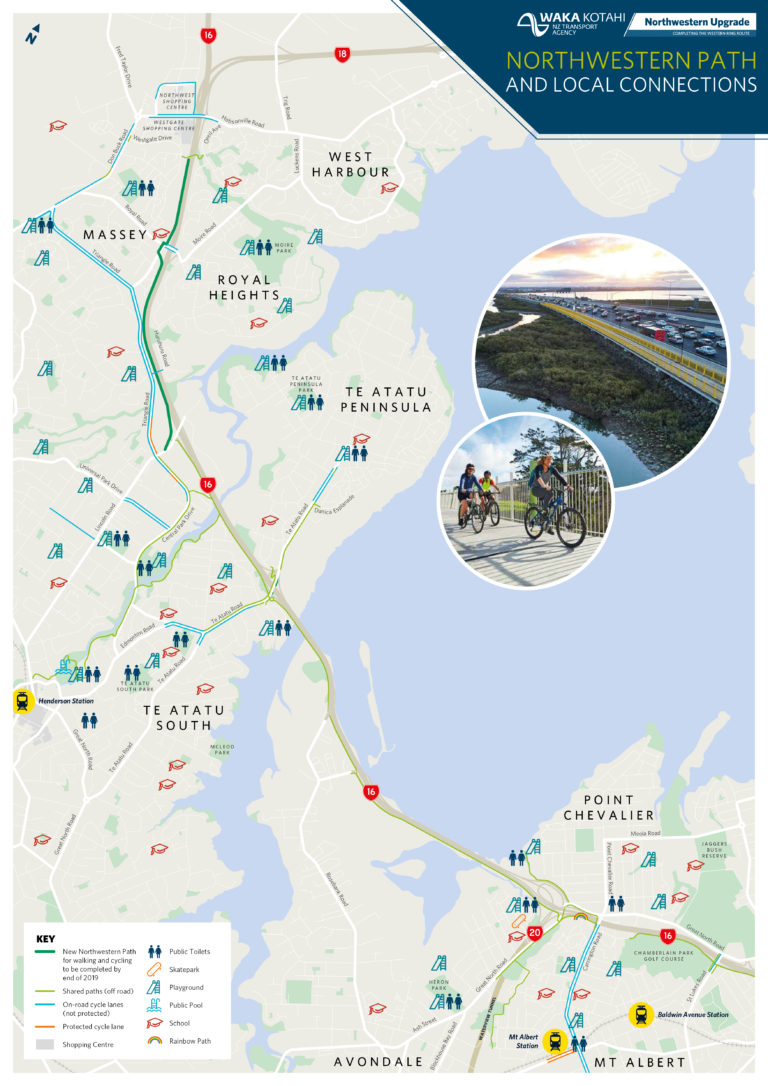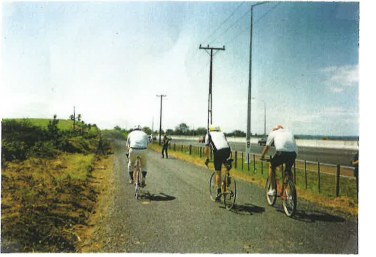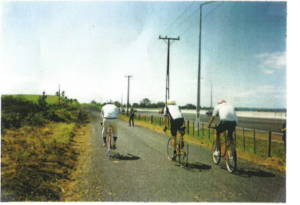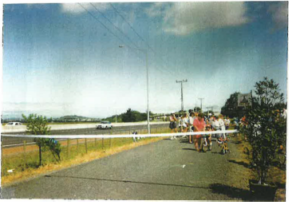Before this summer is out, we’ll have a Northwestern Cycleway connection all the way from Massey/Westgate to the central city (officially opening Thursday 19 December at 11am at Royal Road School – find out more here!). It’s been a long road to get here, but where did it all begin? Every journey starts with a single step. In this post, Sam Finnemore takes a step back twenty-seven years to find out who got things rolling alongside SH16, and how the vision of a path from the west to the city set a template for what followed in Auckland…
A little bit of history
The Northwestern Motorway‘s causeway from Waterview to Te Atatu opened all the way back in 1952, an immediate product and facilitator of the postwar motoring boom. (Trams would last only another four years on Auckland’s streets.)
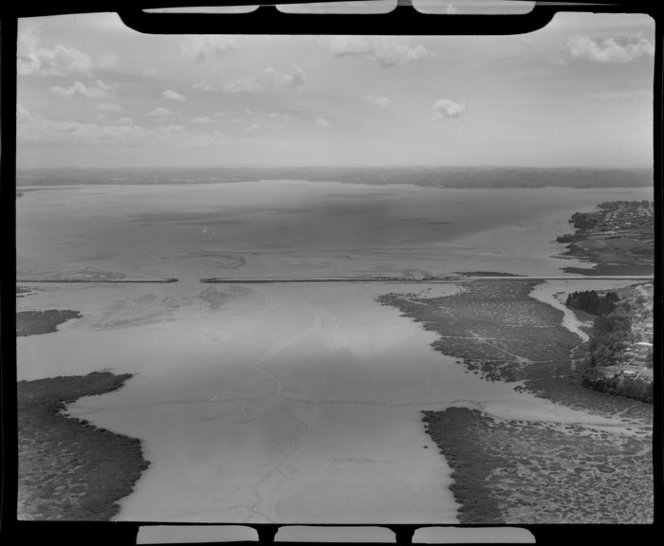
The new causeway provided a big, brash, direct coastal contrast to the Western rail line and the original Great North Road snaking through New Lynn, where the Whau had been bridged in 1932. Later still, that route would gain another bypass in the form of Rata and Ash Streets in 1978, complete with an extra-wide bridge over the Whau as future-proofing for a motorway route right through New Lynn to Henderson. Cue a sigh of relief from current generations that this didn’t happen…
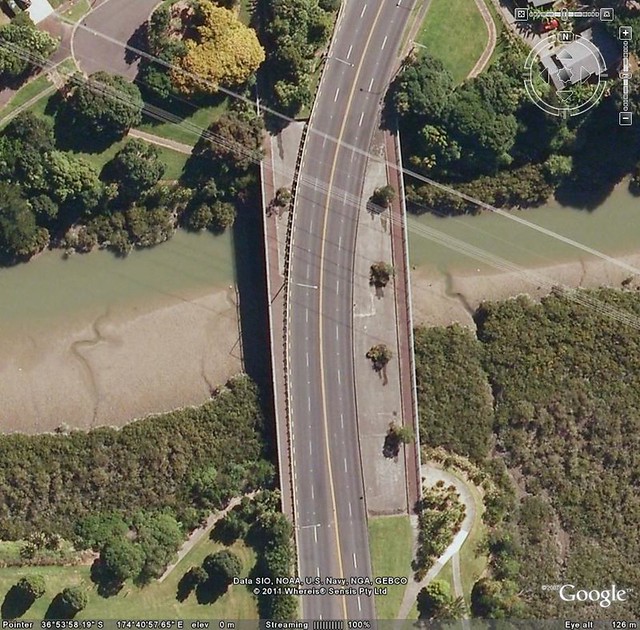
But the causeway, then as now, was the scene-setter for West Auckland’s twentieth-century growth (and its twenty-first century transport woes, sad to say). It set the pattern for busy ‘stroads’ carrying tides of traffic out of the West in the morning and back again at night. Though that Rata Street bridge never became a motorway route, innumerable other roads in the west became mini-motorways in all but name.
Meanwhile, for people on bikes all roads still led through Avondale and New Lynn, and those roads became busier and less welcoming by the year. It was (and remains) a long way to ride. So, around 1986 – more than a third of a century after the causeway opened – a handful of motivated people decided it would make sense to have a more direct bike connection. The causeway was right there. Why not?
The people with a vision
One of these tenacious folk was Kurt Brehmer, famed as the driving force behind the cycle lanes on Carrington Road at Mount Albert, which were among the very first on-road marked lanes in Auckland. Another was David J. Knight, a fire service officer working in central Auckland but living in Henderson.
In a package of notes shared along by his wife Shirley and son Dale, David recounts that the group named itself Cycle Action New Zealand, with David as chair and Kurt as secretary.
This early era of advocacy in Auckland is a bit hazy, but various movers and shakers in this group were also involved in what became the national Cycle Action Network in 1996, plus of course Cycle Action Auckland (CAA), later to be known as Bike Auckland. This early CAN newsletter retrieved from the bowels of Google sheds a little light. Any further memories from readers are welcome!
At any rate, while Kurt looked closer to town, David applied his efforts to the causeway – where he ran into what seemed at first to be an immovable obstacle:
I made the motorway my main interest… [and] found out that the motorway land had a clause in the document that stated “no cyclists or pedestrians were allowed access to motorway land”
This phrase just negated any action by councils or anyone else… Although we had some support from the Waitakere and Auckland City Councils, they had the perfect excuse to disallow us access.
Nevertheless, David and friends made an application to the authorities – and somewhere within the next five years of patient lobbying, a largely forgotten hero entered the picture:
Luckily we had a Mr Van Haresnape in the Auckland Regional Council who worked on a cost-benefit study and supplied it to the councils and government, and eventually got the clause removed from the transportation document. His efforts with his document were invaluable at this time.
We’ll say! Not just invaluable at the time, but a major enabler of all that followed. That one rule change was a watershed moment for cycling in Auckland as we know it.
By making possible the building of shared paths on what is now NZTA land, this breakthrough not only delivered upgrades Northwestern all the way into the city – it also helped set the requirement for paths alongside new and widened motorways, including as part of the Waterview Connection, and down to Mangere. It made Lightpath possible, and it’ll soon be bringing us the long-awaited access over the Auckland Harbour Bridge.
Mr Van Haresnape, if you’re out there, please step up to receive your plaudit!
The vision made real
The causeway became the original shared cause, and two noted cycling and fitness buffs in high places were on board with the vision: Waitakere Mayor Bob Harvey (later Sir Bob) and Auckland City Mayor (and Point Chevalier resident) Les Mills. Thus, on 6 December 1992, the stretch from Te Atatu to Point Chevalier became home to the very first off-road separated cycleway on Transit land.
It took confidence and unwavering optimism, right up to the end. When asked about the chance of rain at the opening ceremony, the formidable Kurt Brehmer reportedly replied: “It’s going to be fine. It’s been taken care of.” (Talk about friends in very high places!)

Thanks to Shirley Knight, we have some wonderful pictures of the occasion. It was a gorgeous summer day, with Jonathan Hunt MP presiding over the ribbon-cutting, and a fleet of riders young and old awaiting the opening. The hairstyles, the Panama hats and jeans, the bright white T-shirts and fluoro stabs of colour from helmets: it couldn’t be any time but the early Nineties.
These are images from a lower-resolution age, filtered through a late 2000s colour printer, but the energy and excitement from people who just wanted to get riding still jumps out.

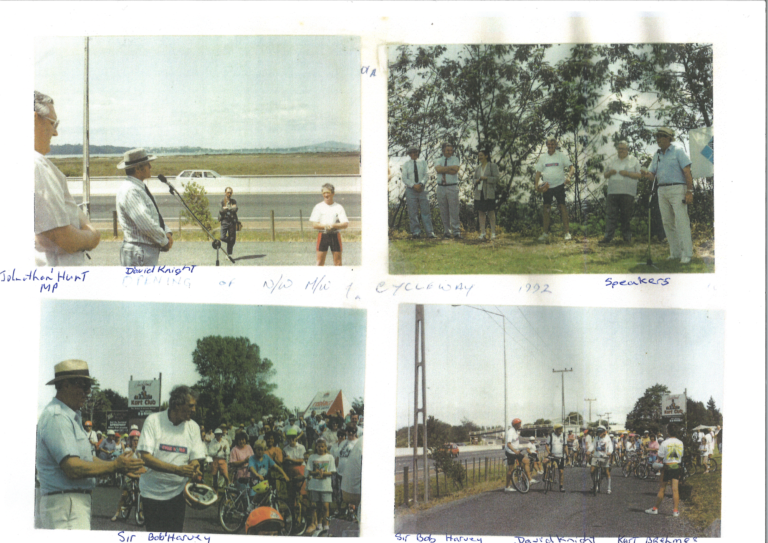


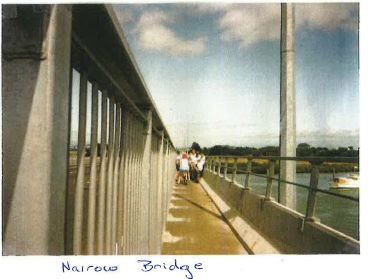
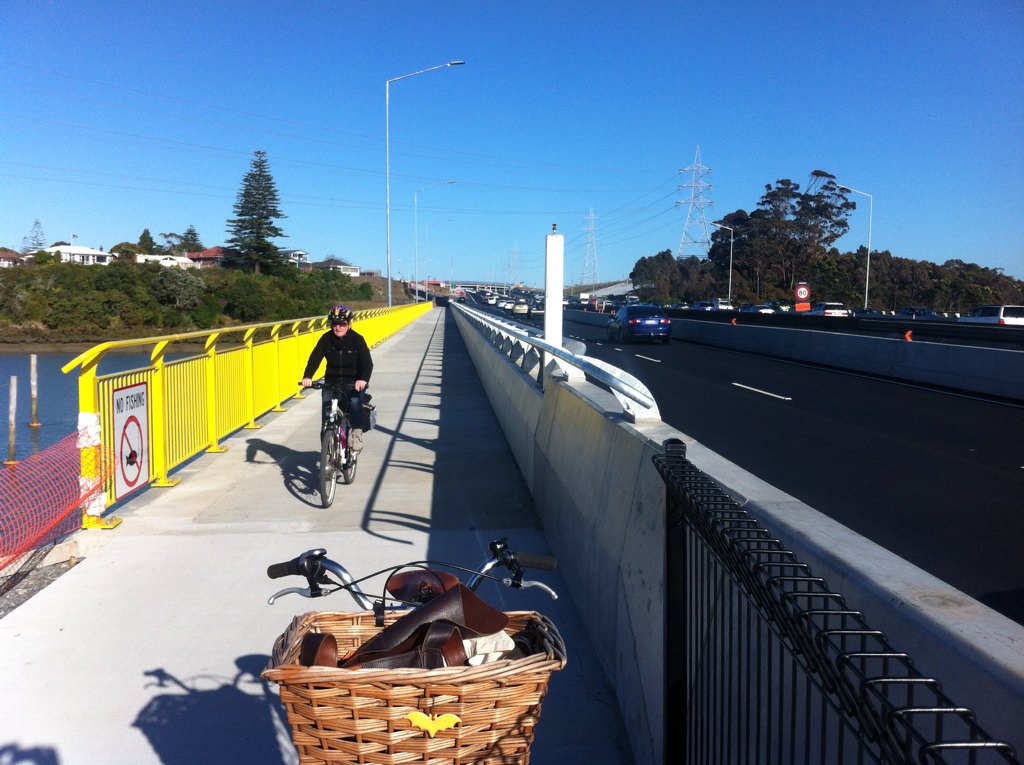
Looking back to look ahead: what can we learn from this story?
The Northwestern path literally opened up the possibility of riding from the West into town. By virtue of its scale, it also set a certain frame for what became, for some time, the official view of cycling in Auckland: the long-distance commuter as the mainstay of infrastructure design and strategic thinking.
We’ve got a lot to be grateful for from the efforts of David, Kurt, Van and so many others – not least of which is the appearance of local advocacy groups along the way, like Bike Te Atatu, the hardy and hearty stalwarts of the causeway, recently joined by Bike Henderson, Bike Avondale, and soon to be Bike Massey.
David Knight’s works have been recognised with a granite plaque at Tui Glen in Henderson, and another bronze marker at the Great North Road overbridge at Point Chevalier – in the shadow of a bike balance bar, a handy item he was proud to have pushed for at various points along the Northwestern Cycleway.

For his part, Kurt Brehmer is memorialised with a sign on Carrington Road.
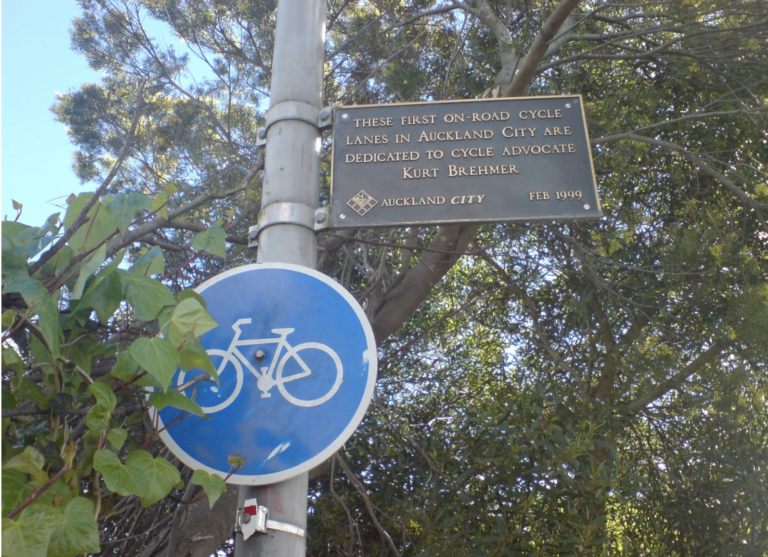
Still making official appearances on his bike as late as 2004, at the age of eighty-nine, Kurt Brehmer passed away in 2010 after a life well-lived and remains fondly remembered in cycling, horticultural, peace activism and local history circles.

At the same time as saluting these pioneers – and the other lesser known figures who backed their efforts – we should also reflect on the fact that these long-distance paths are intended to be the centrepiece of a wider network that should extend into local streets and out into communities, not just past or through them.
For example: it’ll be almost thirty years since that sunny December 1992 ribbon-cutting before we finally have a safe path from Avondale to New Lynn, which is finally getting under way this summer. Welcome as this path will be, that’s a very long time to wait for safe travel to this major growth community that was literally bypassed by the Northwestern Motorway.
And of course other parts of Auckland have been waiting just as long – and may wait decades more – for safe bike routes, and local heroes to champion them (although we’re always recruiting).
So, as we mark the twenty-seventh birthday of Auckland’s busy, longest, fastest-growing long-distance bike path, what can we learn from this history?
- It takes collaboration. The early days of pushing for the Northwestern path were all about building networks, working with the willing, reaching out to people in and out of officialdom who were motivated to make things happen. The effort and the reward – then as now – is all in seeking out goodwill wherever it exists, and building relationships that can turn it into action.
- It’s so very, very worth it. Persistence, and a breakthrough in one area, can have massive knock-on effects. Support from different quarters adds up. And before you know it, you’ve created something amazing. The Northwestern path and others that followed it are helping, slowly but surely, to knit Auckland together at a human scale. This includes helping “reclaim” landscapes that car travel and the motorway system turned into non-places – witness the mangrove mini-lookouts added along the causeway during its recent upgrade, acknowledging destinations and delight in places that had been little more than blurred glimpses for the last half of the twentieth century.
- It just can’t keep taking this long. It’s beyond time for the next, even bigger, and urgently necessary phase of Auckland’s bike resurgence: the one that starts from the trunk of the off-road network, sprouting out and blossoming into bikeable life all the way through our city – thanks to safer speeds, protected paths on arterials, quieter neighbourhood streets, and a serious approach to road safety enforcement.
Time’s been a-wasting. Where are they now, those happy kids from December 1992? How many of them kept riding through school and into adulthood? And what are we doing for their own children, right now? What immovable obstacles must we shift next? And who will be our willing allies on the way? With great examples to be inspired by, we have every reason to crank up the pace.
With many thanks to David, Shirley and Dale Knight for sharing their treasure trove of notes, clippings and photos with us.
Like Auckland’s bike network, our occasional history of the people who made it happen is a work in progress – so if you spot any gaps in the record that need filling, and have images, insights or information to hand, be it big or small, let us know!
— Sam Finnemore
